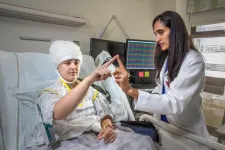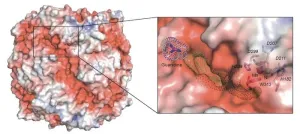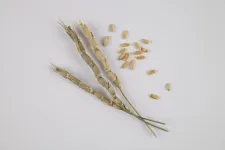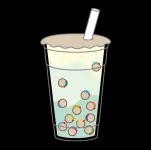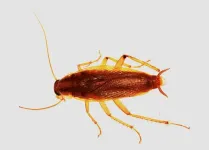(Press-News.org) The coordinated activity of brain cells, like birds flying in formation, helps us behave intelligently in new situations, according to a study led by Cedars-Sinai investigators. The work, published in the peer-reviewed journal Nature, is the first to illuminate the neurological processes known as abstraction and inference in the human brain.
“Abstraction allows us to ignore irrelevant details and focus on the information we need in order to act, and inference is the use of knowledge to make educated guesses about the world around us,” said Ueli Rutishauser, PhD, professor and Board of Governors Chair in Neurosciences at Cedars-Sinai and co-corresponding author of the study. “Both are important parts of cognition and learning.”
Humans often use these two cognitive processes together to rapidly learn about and act appropriately in new environments. One example of this is an American driver who rents a car in London for the first time.
“The English drive on the right-hand side of the car and on the left-hand side of the road, the opposite of the way we do in the U.S.,” Rutishauser said. “For someone from the U.S., driving in London means reversing many of the rules they have learned, and making that mental shift requires abstraction to focus on driving-sidedness, and making inferences to avoid pulling directly into oncoming traffic.”
In the study, investigators worked with 17 hospitalized patients who had electrodes surgically implanted in their brains as part of a procedure to diagnose epilepsy. In total, the researchers recorded the firing of thousands of brain cells as participants performed an inference task on a computer.
Looking at the activity of so many brain cells required the use of artificial intelligence to extract the responses that were relevant, allowing investigators to see the coordination between the neurons during successful inference.
“These are high-dimensional geometrical shapes that we cannot imagine or visualize on a computer monitor,” said Stefano Fusi, PhD, a principal investigator at Columbia University’s Zuckerman Mind Brain Behavior Institute and co-corresponding author of the study. “But we can use mathematical techniques to visualize simplified renditions of them in 3D.”
During the recordings, participants were repeatedly shown four pictures—a person, a monkey, a car and a watermelon. In response to each picture, they were asked to press a left-hand or right-hand button. Individuals then received a “correct” or “incorrect” message.
Through repetition, participants eventually learned the correct response for each of the four pictures. At that point, the rules of the game were reversed without the participants being informed, and the opposite response for each picture was counted as correct.
After the switch, some participants were able to quickly figure out the rule change and infer the correct responses without relearning them, meaning they performed inference.
Investigators saw striking geometric patterns in the brains of those participants. Groups of neurons were firing together, much like birds flying in formation or a crowd of people spontaneously taking up a chant at a sporting event. The way the neurons coordinated their activity and encoded the relevant information indicated that the subjects had gained the conceptual knowledge needed to perform the task. Investigators saw no such patterns in the brains of participants who were not successful in using inference.
“Building conceptual knowledge is an important aspect of learning,” said Hristos Courellis, PhD, a researcher at Cedars-Sinai and first author of the study. “In our study, we identified a neural basis for this process, which in cognitive psychology is referred to as abstraction.”
Some subjects were initially not able to perform inference from experience with the task alone. For these subjects, investigators provided verbal instructions that allowed the subjects to then infer the correct answers.
“A remarkable discovery was that the same neural geometries emerged in participants who received verbal instructions as in those whose ability to infer was based on experiential learning,” said Adam Mamelak, MD, director of the Functional Neurosurgery Program and professor of Neurosurgery at Cedars-Sinai and co-author of the study. “This crucial discovery shows that verbal input can result in neural representations that otherwise might take a long time to learn through experience.”
The study, which relied on data from Cedars-Sinai and the University of Toronto, was led by Cedars-Sinai and conducted as part of a multi-institutional consortium funded by the National Institutes of Health’s The Brain Research Through Advancing Innovative Neurotechnologies Initiative, or The BRAIN Initiative.
“This study provides new insights into how our brains allow us to learn and carry out tasks flexibly and in response to changing conditions and experiences,” said Merav Sabri, PhD, program director for The BRAIN Initiative. “These insights build on the body of knowledge that could one day lead us toward interventions for neurologic and psychiatric conditions that involve deficits in memory and decision-making.”
A surprise to investigators was the discovery that these particular patterns of brain activity emerged only in the hippocampus, a region deep in the center of the brain that is known to be crucial for the formation of new long-term memories.
“Our finding expands our knowledge of the role of the hippocampus in learning,” Rutishauser said. “This is the first direct demonstration of the involvement of the human hippocampus in the learning of abstract knowledge and inference behavior. Many neurological conditions, including Alzheimer’s disease, obsessive-compulsive disorder and schizophrenia, affect this brain region, and our finding could help explain the impaired decision-making we see in these patients.”
Additional Cedars-Sinai authors include Juri Minxha, and Chrystal M. Reed.
Other study authors include Araceli R. Cardenas, Daniel Kimmel, Taufik A. Valiante, and C. Daniel Salzman.
Funding: This work was supported by The BRAIN Initiative through the NIH Office of the Director (U01NS117839 to U.R.) and the Simons Foundation Collaboration on the Global Brain (to S.F., and U.R.).
END
Patterns of intelligence
Cedars-Sinai scientists discover structured brain activity that represents knowledge gained via learning; Artificial intelligence helps identify geometric patterns of neuron firing
2024-08-14
ELSE PRESS RELEASES FROM THIS DATE:
Immune cell regulator discovery could lead to treatments for arthritis and severe COVID
2024-08-14
Immune cell regulator discovery could lead to treatments for arthritis and severe COVID
The discovery of a new regulator affecting immune cells could lead to new treatments to reduce inflammation in diseases including arthritis and severe COVID 19.
A large research collaboration, led by the University of Exeter’s MRC Centre for Medical Mycology, has focused on how immune cells sense their environment. This activity triggers responses which are finely balanced, to protect against disease and infection, and to reduce cell-damaging inflammation.
The ...
Brigham researchers develop an implantable device to detect and respond to opioid overdose
2024-08-14
In preclinical models, the subcutaneously implanted device continuously monitored vital signs and delivered naloxone automatically and rapidly when it detected opioid overdose
The opioid epidemic continues to have devastating effects in the United States, exacerbated by the increasing presence of fentanyl in illicit opioids. Naloxone is an effective antidote, but it usually requires rapid administration from a bystander. Now, researchers from Brigham and Women’s Hospital, a founding member of the Mass General Brigham healthcare ...
Larger teams in academic research worsen career prospects, study finds
2024-08-14
As the Paris Olympics captured the world’s attention this month, it proved apparent that winning medals often hinged on the success of teamwork.
While such an approach clearly works in sports, new research suggests teamwork is not always the desired method … especially for young scientists trying to find an academic job.
“We found that if your team size in your discipline is large, your prospects for an academic career go down,” said Donna Ginther, the Roy A. Roberts Distinguished Professor of Economics at the University of Kansas.
Her paper titled “The rise of teamwork and career prospects in academic science” ...
Newly discovered ability of comammox bacteria could help reduce nitrous oxide emissions in agriculture
2024-08-14
An international research team led by the Centre for Microbiology and Environmental Systems Science (CeMESS) at the University of Vienna has discovered that comammox bacteria, first identified by them in 2015, can grow using guanidine, a nitrogen-rich organic compound, as their sole energy and nitrogen source. This unique ability opens new avenues for targeted cultivation of these enigmatic microbes and could also provide a key to reducing agricultural nitrous oxide emissions. The research findings were recently published as an article in the prestigious journal Nature.
Nitrification, the conversion of ammonia via nitrite to nitrate, is ...
Cybersecurity flaws could derail high-profile cycling races
2024-08-14
High-end bicycles used for high-profile road races such as the Tour de France are vulnerable to cybersecurity attacks targeting the bike’s wireless gear shifting system.
In recent years, bicycle manufacturers have adopted wireless gear-shifting technology, which gives riders better control over changing gears. The technology is not vulnerable to the physical issues that plague mechanical systems. However, the way the wireless systems were built created critical cybersecurity vulnerabilities, which a team of computer scientists from the University of California ...
How bread dough gave rise to civilization
2024-08-14
A major international study has explained how bread wheat helped to transform the ancient world on its path to becoming the iconic crop that today sustains a global population of eight billion.
“Our findings shed new light on an iconic event in our civilisation that created a new kind of agriculture and allowed humans to settle down and form societies,” said Professor Brande Wulff, a wheat researcher at KAUST (King Abdullah University of Science and Technology) and one of the lead ...
Revealing the mysteries within microbial genomes
2024-08-14
A new technique developed at Lawrence Berkeley National Laboratory (Berkeley Lab) will make it much easier for researchers to discover the traits or activities encoded by genes of unknown function in microbes, a key step toward understanding the roles and impact of individual species.
The approach, called barcoded overexpression bacterial shotgun library sequencing, or Boba-seq, is described in a paper published August 5 in Nature Communications.
“There is so much genetic dark matter – ...
Consumer-grade insecticide sprays fail to control cockroaches, study shows
2024-08-14
Annapolis, MD; August 14, 2024—A common variety of consumer insecticide sprays is mostly ineffective and of "little to no value" in eliminating cockroach infestations, a new study shows.
Residual insecticides are designed to be sprayed on surfaces where cockroaches are likely to appear, exposing them to the toxic ingredient when they move across the surface later. But laboratory testing by researchers at the University of Kentucky and Auburn University shows that the residues have little effect on German cockroaches (Blattella germanica), ...
Children’s Hospital of Philadelphia researchers find possible inaccuracies in crash-reported child passenger injuries
2024-08-14
Philadelphia, August 14, 2024 – Researchers from the Center for Injury Research and Prevention (CIRP) at Children’s Hospital of Philadelphia (CHOP) found discrepancies between crash reports and hospital data that might paint an incomplete or inaccurate picture of how crashes impact the safety of child passengers. Enhancing the quality of injury data reported in crash reports can aid researchers in assessing the effectiveness of various transportation safety strategies for children. The findings were recently published by ...
Ontario Institute for Cancer Research announces awards for eight research teams developing innovative ways to diagnose and treat cancer
2024-08-14
August 14, 2024, TORONTO — A new round of awards from the Ontario Institute for Cancer Research (OICR) will jumpstart eight promising studies that could change how cancers are diagnosed and treated.
OICR announced the results of its Pre-Clinical Acceleration Team Awards — part of the Institute’s Clinical Translational Pathway, which helps advance new discoveries so they can benefit people affected by cancer.
The winning research teams are based across Ontario and are tackling some of the most common and hardest to treat cancers. They are developing solutions to find cancer earlier, diagnose it more ...
LAST 30 PRESS RELEASES:
Study: Teens use cellphones for an hour a day at school
After more than two years of war, Palestinian children are hungry, denied education and “like the living dead”
The untold story of life with Prader-Willi syndrome - according to the siblings who live it
How the parasite that ‘gave up sex’ found more hosts – and why its victory won’t last
When is it time to jump? The boiling frog problem of AI use in physics education
Twitter data reveals partisan divide in understanding why pollen season's getting worse
AI is quick but risky for updating old software
Revolutionizing biosecurity: new multi-omics framework to transform invasive species management
From ancient herb to modern medicine: new review unveils the multi-targeted healing potential of Borago officinalis
Building a global scientific community: Biological Diversity Journal announces dual recruitment of Editorial Board and Youth Editorial Board members
Microbes that break down antibiotics help protect ecosystems under drug pollution
Smart biochar that remembers pollutants offers a new way to clean water and recycle biomass
Rice genes matter more than domestication in shaping plant microbiomes
Ticking time bomb: Some farmers report as many as 70 tick encounters over a 6-month period
Turning garden and crop waste into plastics
Scientists discover ‘platypus galaxies’ in the early universe
Seeing thyroid cancer in a new light: when AI meets label-free imaging in the operating room
Neutrophil-to-lymphocyte ratio may aid risk stratification in depressive disorder
2026 Seismological Society of America Annual Meeting
AI-powered ECG analysis offers promising path for early detection of chronic obstructive pulmonary disease, says Mount Sinai researchers
GIMM uncovers flaws in lab-grown heart cells and paves the way for improved treatments
Cracking the evolutionary code of sleep
Medications could help the aging brain cope with surgery, memory impairment
Back pain linked to worse sleep years later in men over 65, according to study
CDC urges ‘shared decision-making’ on some childhood vaccines; many unclear about what that means
New research finds that an ‘equal treatment’ approach to economic opportunity advertising can backfire
Researchers create shape-shifting, self-navigating microparticles
Science army mobilizes to map US soil microbiome
Researchers develop new tools to turn grain crops into biosensors
Do supervised consumption sites bring increased crime? Study suggests that’s a myth
[Press-News.org] Patterns of intelligenceCedars-Sinai scientists discover structured brain activity that represents knowledge gained via learning; Artificial intelligence helps identify geometric patterns of neuron firing
